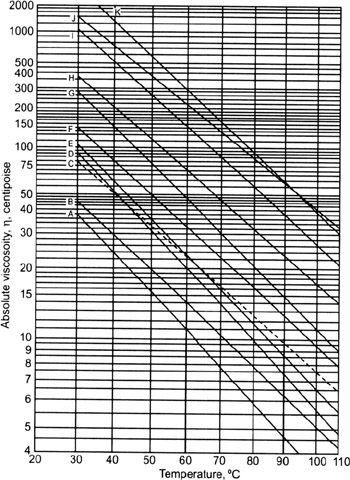
When the motor is running, acid compounds from the burned fuel are mixed in the oil, and they must be neutralised in order to prevent corrosion of the metal parts. With the pour point, it is possible to describe approximately the cold start properties of oil, but in many cases it is not enough it is more important to know the true oil viscosity at the starting temperature. The pour point can be improved by using an additive that prevents the growth and interconnection of wax crystals. Fully synthetic oils do not contain wax and their cold properties are excellent. The oil eventually becomes so stiff that it no longer flows with its own weight. Naphthenic oils have less or no wax, and they remain fluid in lower temperatures than paraffinic oils. The more the oil cools down the bigger the crystals grow, eventually forming a flow-preventing network within the oil. In paraffinic oils, stiffening is caused by the wax in the oil, which is distinguishable as crystals. The pour point depends on, e.g., the viscosity and chemical structure of the oil. This temperature is called the pour point.

At a certain temperature it no longer flows by its own weight. The ignition point is usually 10-50 ☌ higher than the flash point. Ignition point is the temperature at which the gases vaporized from the fluid when heated in an open cup burn for at least five seconds when ignited with a naked flame. Flash point is the temperature at which, measured from the fluid with a certain method, flammable gases are vaporized so much that they flame up when ignited with a naked flame, but the fluid does not carry on burning. The flash point expresses the flammability of a fluid. of single-grade motor oils is about 95-110, and that of multi-grade motor oils even higher than 200. The stronger the fluid thinning the smaller the viscosity index. Viscosity index (V.I.) describes the fluid’s tendency to thin as the temperature rises. It measures the time the oil requires to flow from point m1 to point m2. Kinematic viscosity is measured by the pictured Ubbelohde viscometer. A typical viscosity of motor oil SAE 10W at a temperature of -20 ☌ may be 2,000 cP, but if it heats up to a temperature of +100 ☌ the viscosity is only 5.2 cSt. All oils become much thinner as the temperature rises. The temperature must always be given when expressing viscosity with any unit. The connection of cSt and cP is cP = cSt x fluid density. Centipoise (cP)Ĭentipoise is a unit of dynamic viscosity, often used for expressing the internal friction of oil in low temperatures. Centistoke (cSt)Ĭentistoke is a unit of kinematic viscosity, based on the amount of force required to beat the internal friction of fluid. Nowadays, lubricant viscosity is usually expressed with the units centistoke (mm2/s) and centipoise (mPas). The thicker a fluid is, the greater its viscosity. Lubricant densities range between about 700 and 950 kg/m3, depending on the quality, viscosity and additive content of the lubricant. In oils, it is usually indicated in the temperature of +15☌ or +20☌, in units kg/m3.

Questions and answers about Neste and plastics.The tables below show examples for different crude oils and their typical values for kinematic viscosity and ☊PI. *Different sources state a different maximum percentage of sulfur content for sweet crudes (between 0.42 % up to 1 %). Sour crude: sulfur content higher than 1 %.

Sweet crude: sulfur content up to 1 % *.Intermediate oils are between these extremes.Īccording to the sulfur content, it can be distinguished between: Light crude oils flow easily and contain more volatile components, while extra-heavy crude oils are highly viscous to nearly tar-like and show a higher density. The API degrees indicate whether a crude oil floats on water or sinks. Extra-heavy crude oil: API gravity below 10 ☊PI (higher than 1000 kg/m³).Heavy crude oil: API gravity from 22.3 ☊PI to 10 ☊PI (920 to 1000 kg/m³).Medium crude oil: API gravity from 31.1 ☊PI to 22.3 ☊PI (870 to 920 kg/m³).Light crude oil: API gravity higher than 31.1 ☊PI (less than 870 kg/m³).Crude oil's viscosity can vary from a low-viscosity liquid to up to tar-like, nearly solid form.Ĭlassification according to the API degree: Both a crude oil's viscosity and its API (American Petroleum Institute) degree are important parameters for classification. The different types of crude oil need to be classified for further treatment. Depending on its geographic origin, its chemical composition and consistency vary. Crude oil is a complex mixture of various components.


 0 kommentar(er)
0 kommentar(er)
